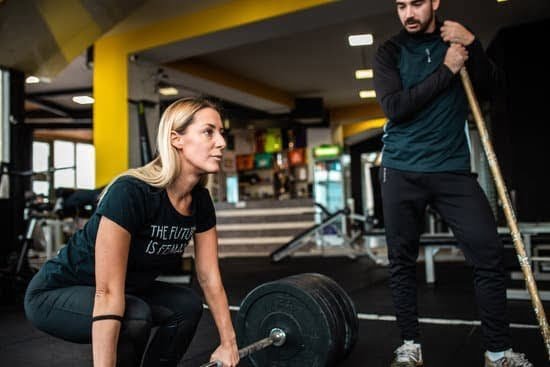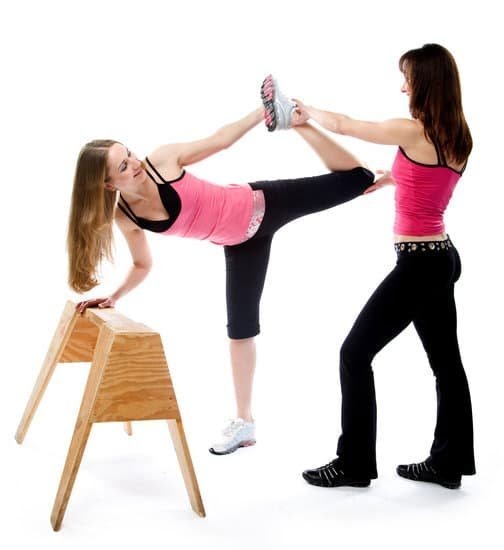Where does sports fit in the primary goal of education? This question has been at the center of ongoing debates and discussions in educational institutions worldwide. The role of sports in education is a topic that continues to evolve as educators, parents, and students recognize the numerous benefits that physical activity can have on overall academic and personal development.
Participation in sports provides numerous benefits that go beyond physical fitness. Research has shown that engaging in sports activities can contribute to the holistic education of students, promoting teamwork, leadership development, healthy lifestyles, and even academic performance. This article aims to delve into the multifaceted role of sports in education, exploring how it impacts various aspects of a student’s life.
From developing life skills to overcoming challenges and adversity, sports play a vital role in shaping the character and well-being of students. By integrating sports into the school curriculum, educators have the opportunity to create an environment that fosters not only academic growth but also personal development. As we explore the significance of sports in education, it becomes evident that its impact goes far beyond physical activity.
The Importance of Physical Activity in Overall Education
Physical activity is an essential component of a well-rounded education, and sports play a crucial role in providing students with opportunities to engage in physical fitness. In today’s increasingly sedentary society, it is more important than ever to encourage young people to be active and adopt healthy lifestyles.
Sports not only contribute to physical wellness but also have a positive impact on mental health. Students who participate in sports are less likely to experience anxiety and depression, and they often exhibit higher levels of self-esteem and confidence.
According to the Centers for Disease Control and Prevention (CDC), regular physical activity in childhood and adolescence has many benefits, including stronger bones and muscles, improved fitness, better school performance, and reduced risk of developing conditions such as obesity, heart disease, and type 2 diabetes. Additionally, physical activity has been shown to improve cognitive function, which can directly benefit academic achievement.
Incorporating sports into the school curriculum provides students with structured opportunities for physical activity that can help them develop healthy habits that will carry over into adulthood. By promoting the importance of physical activity through sports participation, schools can contribute to the overall well-being of their students while addressing the question: where does sports fit in the primary goal of education?
| Benefits of Physical Activity | Impact on Students |
|---|---|
| Stronger bones and muscles | Improved physical health |
| Better school performance | Enhanced cognitive function |
| Reduced risk of chronic diseases | Promotion of long-term wellness |
Developing Life Skills Through Sports Participation
Sports participation plays a significant role in the development of essential life skills that are crucial for success both inside and outside the classroom. Here are some of the life skills that students can develop through sports:
- Time management: Being involved in sports requires students to balance their academic responsibilities with their practice and game schedules. This teaches them valuable time management skills, as they learn to prioritize their tasks and allocate time effectively.
- Discipline: Sports require a high level of discipline, from following the rules of the game to maintaining a regular training regimen. This discipline translates into their academic pursuits, as they understand the importance of consistent effort and focus.
- Resilience: In sports, students often face challenges and setbacks, such as losing a game or struggling with a particular skill. Through these experiences, they learn how to bounce back from adversity and develop resilience, which is essential for overcoming obstacles in all aspects of life.
- Communication and teamwork: Engaging in team sports fosters effective communication and collaboration with teammates. Students learn how to work together towards a common goal, resolve conflicts, and support each other during both wins and losses.
Incorporating these life skills into the school curriculum through sports participation provides students with a well-rounded education that goes beyond traditional academic learning. It allows them to cultivate important traits that contribute to their overall personal and professional success. Where does sports fit in the primary goal of education? The development of these life skills demonstrates how sports can complement the primary goal of education by preparing students for future challenges and opportunities.
Teamwork and Leadership Development in Sports
Participating in sports not only promotes physical fitness but also fosters the development of important life skills, such as teamwork and leadership. When students engage in team sports, they learn how to work collaboratively with others towards a common goal. This is a crucial skill that translates into many aspects of their future professional and personal lives.
Below are some key ways in which sports contribute to the development of teamwork and leadership skills:
- Communication: In team sports, effective communication is essential for success. Players learn how to effectively convey information, provide feedback, and listen to their teammates. This skill is transferable to academic group projects, workplace collaboration, and interpersonal relationships.
- Conflict resolution: Being part of a sports team exposes students to disagreements and conflicts, providing them with opportunities to learn how to resolve disagreements in a constructive manner. This ability carries over into their interactions with peers and superiors as they progress through their education and into the workforce.
- Decision-making: Within the context of sports, individuals often have to make quick decisions under pressure. By learning how to make sound decisions during intense situations on the field or court, students develop critical thinking abilities that they can apply in other areas of their lives.
In summary, where does sports fit in the primary goal of education? The promotion of teamwork and leadership development through sports participation directly aligns with one of the main goals of education – preparing students for success in all aspects of life. These skills contribute not only to academic achievement but also to the holistic development of individuals as capable and responsible members of society.
The Impact of Sports on Academic Performance
Sports and academic performance are two aspects of education that are often seen as separate, but the reality is that they can have a significant impact on each other. In fact, research has shown that students who participate in sports tend to perform better academically than those who do not.
Time Management and Discipline
Participating in sports requires a great deal of time and dedication, which can help students develop important skills such as time management and discipline. Student-athletes often learn how to balance their academic responsibilities with their training schedules, leading to better time management skills that can positively impact their academic performance.
Improved Focus and Concentration
Engaging in physical activity through sports can also lead to improved focus and concentration, which are crucial for academic success. Regular exercise has been shown to increase blood flow to the brain, leading to improved cognitive function. This means that students who participate in sports may be better able to concentrate during class and retain information more effectively.
Stress Reduction
Finally, sports can help reduce stress levels, allowing students to approach their studies with a clearer mind. Exercise releases endorphins, which are known as “feel-good” hormones that can improve mood and reduce feelings of anxiety or stress. By engaging in sports, students may be better equipped to handle the pressures of academics, leading to improved overall performance in the classroom.
When considering the question of where does sports fit in the primary goal of education, it is clear that integrating sports into the school curriculum can have a positive impact on academic performance. By promoting physical activity, teaching valuable life skills, and reducing stress levels, sports can play a valuable role in supporting the holistic development of students both inside and outside the classroom.
The Role of Sports in Promoting a Healthy Lifestyle
Exercise and Fitness
Sports and physical activity play a crucial role in promoting a healthy lifestyle among students. Through participation in sports, students engage in regular exercise that helps them build strength, endurance, and flexibility. This can lead to better overall health and reduced risk of obesity, heart disease, and other chronic conditions.
Healthy Habits
In addition to the physical benefits, involvement in sports can also encourage students to adopt healthy habits outside of the athletic field. This includes maintaining a balanced diet, staying hydrated, getting enough rest, and avoiding behaviors that are detrimental to their health, such as smoking or excessive drinking.
Mental and Emotional Well-Being
Stress Relief
Engaging in sports can also have positive effects on mental health by providing stress relief and promoting emotional well-being. Physical activity has been shown to release endorphins, which can help reduce feelings of anxiety and depression among individuals. Additionally, being part of a team or engaging in individual sports can provide an outlet for emotional expression and a support system for students.
Overall, integrating sports into education not only promotes physical health but also contributes to the holistic well-being of students. It fosters healthy habits that can be carried into adulthood and provides an avenue for stress relief and emotional support. Where does sports fit in the primary goal of education? It plays a significant role in fostering a lifestyle that values both physical and mental well-being.
Overcoming Challenges and Adversity Through Sports
Sports play a significant role in education, beyond just physical activity and the development of life skills. One area where sports excels in contributing to the primary goal of education is in helping students overcome challenges and adversity. Participating in sports provides students with the opportunity to face obstacles, setbacks, and competition, and learn how to navigate through these challenges.
In sports, individuals often encounter various hurdles such as losing a game, struggling to improve their performance, or dealing with injuries. These experiences teach students valuable lessons about perseverance, resilience, and determination. By facing and overcoming these challenges through sports, students develop important life skills that are applicable not only in their athletic pursuits but also in their academic and personal lives.
Moreover, the adversity that comes with participating in sports helps students expand their comfort zones and develop a growth mindset. Instead of being deterred by failure or difficulties, students learn to embrace these challenges as opportunities for growth.
This mindset shift can have a positive impact on their overall approach to learning and personal development. As such, sports provide a unique platform for students to experience and conquer adversity in a controlled environment, ultimately preparing them for future real-world challenges.
Ultimately, integrating sports into education goes beyond physical fitness – it provides an avenue for students to build character, resilience, and mental toughness. By facing various challenges within the context of sports participation, individuals can develop essential skills that aid them in achieving success not only on the field but also academically and personally. Sports offer an invaluable opportunity for students to learn how to confront adversity head-on and emerge stronger from those experiences.
Where does sports fit into the primary goal of education? It plays a crucial role in shaping well-rounded individuals who are equipped to overcome obstacles throughout their lives.
Integrating Sports Into the School Curriculum
Sports have always been an integral part of school activities, and integrating them into the school curriculum is a crucial aspect of providing a well-rounded education. Physical activity plays a vital role in overall education as it promotes healthy habits, enhances cognitive function, and improves overall well-being. Incorporating sports into the school curriculum ensures that students are not only academically engaged but also physically active, setting the stage for a healthier and more balanced lifestyle.
Participating in sports helps students develop essential life skills such as perseverance, discipline, and resilience. These qualities are fundamental to their personal development and will serve them well beyond the confines of the classroom. Through playing sports, students learn to set goals, work hard to achieve them, and cope with both success and failure. These experiences contribute significantly to their overall growth and maturity.
Furthermore, integrating sports into the school curriculum provides opportunities for students to cultivate teamwork and leadership skills. Collaborating with teammates towards a common goal fosters communication, cooperation, and mutual respect – all of which are invaluable attributes in both academic and professional settings. As such, schools play a vital role in nurturing these qualities by making space for structured and competitive sports programs within their educational framework.
| Role of Sports | Impact |
|---|---|
| Physical activity | Promotes healthy habits and improves well-being |
| Life skills development | Fosters perseverance, discipline, resilience |
| Teamwork & leadership | Cultivates communication, cooperation, mutual respect |
Conclusion
In conclusion, it is evident that sports play a crucial role in the primary goal of education. From promoting physical activity and a healthy lifestyle to developing essential life skills like teamwork and leadership, sports contribute significantly to the overall development of students. This integrated approach to education not only enhances academic performance but also prepares students for the challenges they will face in their personal and professional lives.
By integrating sports into the school curriculum, educators can provide students with a well-rounded education that goes beyond traditional classroom learning. The holistic benefits of including sports in education are clear, as it fosters resilience, discipline, and perseverance in students. Moreover, the sense of camaraderie and sportsmanship that comes from participation in athletics cannot be underestimated.
As we continue to explore the role of sports in education, it is important to recognize that sports fit into the primary goal of education by shaping young individuals into well-rounded, resilient, and disciplined adults. Through physical activity and teamwork, students not only improve their academic performance but also acquire invaluable life skills that will serve them well throughout their lives.
Therefore, it is crucial for schools to prioritize and integrate sports into their educational programs for the benefit of their students’ overall development.
Frequently Asked Questions
What Is the Purpose of Sport Education?
The purpose of Sport Education is to provide a more comprehensive and meaningful experience in physical education. It aims to develop not only physical skills but also knowledge and understanding of sports and fitness.
What Is the Overall Goal of the Sport Education Model Is to Educate Students?
The overall goal of the Sport Education model is to educate students about the various aspects of sports, including rules, strategies, teamwork, and sportsmanship. It seeks to create well-rounded individuals who appreciate the value of physical activity.
What Is the Goal Setting for Physical Education?
Goal setting for Physical Education involves helping students set specific, achievable targets for their physical fitness and skill development. It aims to instill a sense of personal responsibility and motivation in students to improve their overall physical well-being.

Passionate about providing useful information to anyone with an interest in the field of Personal Training, I strive to pass on to our readers quality information and to answer any questions about Personal Trainers, the work they do and how to become one.





